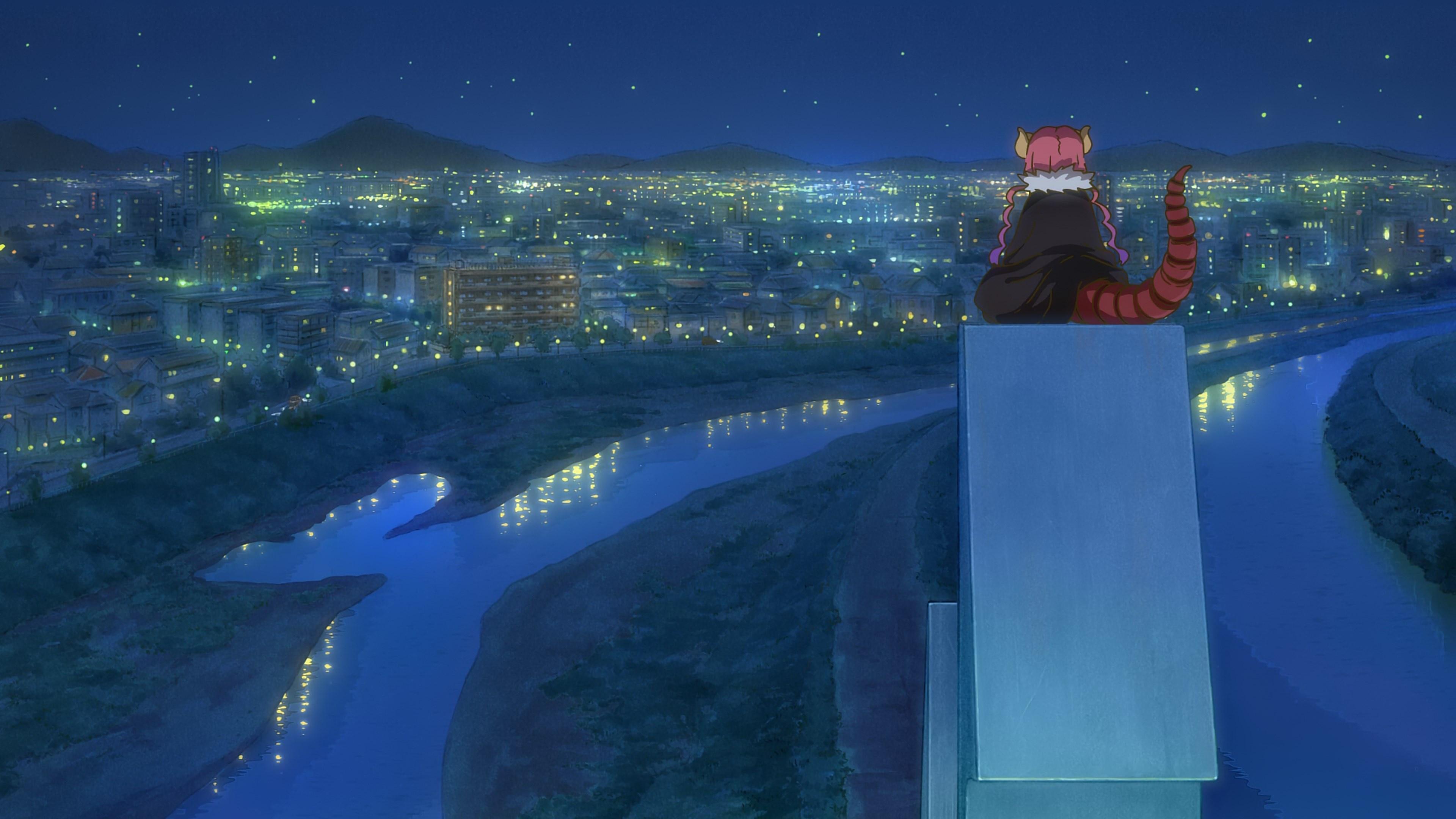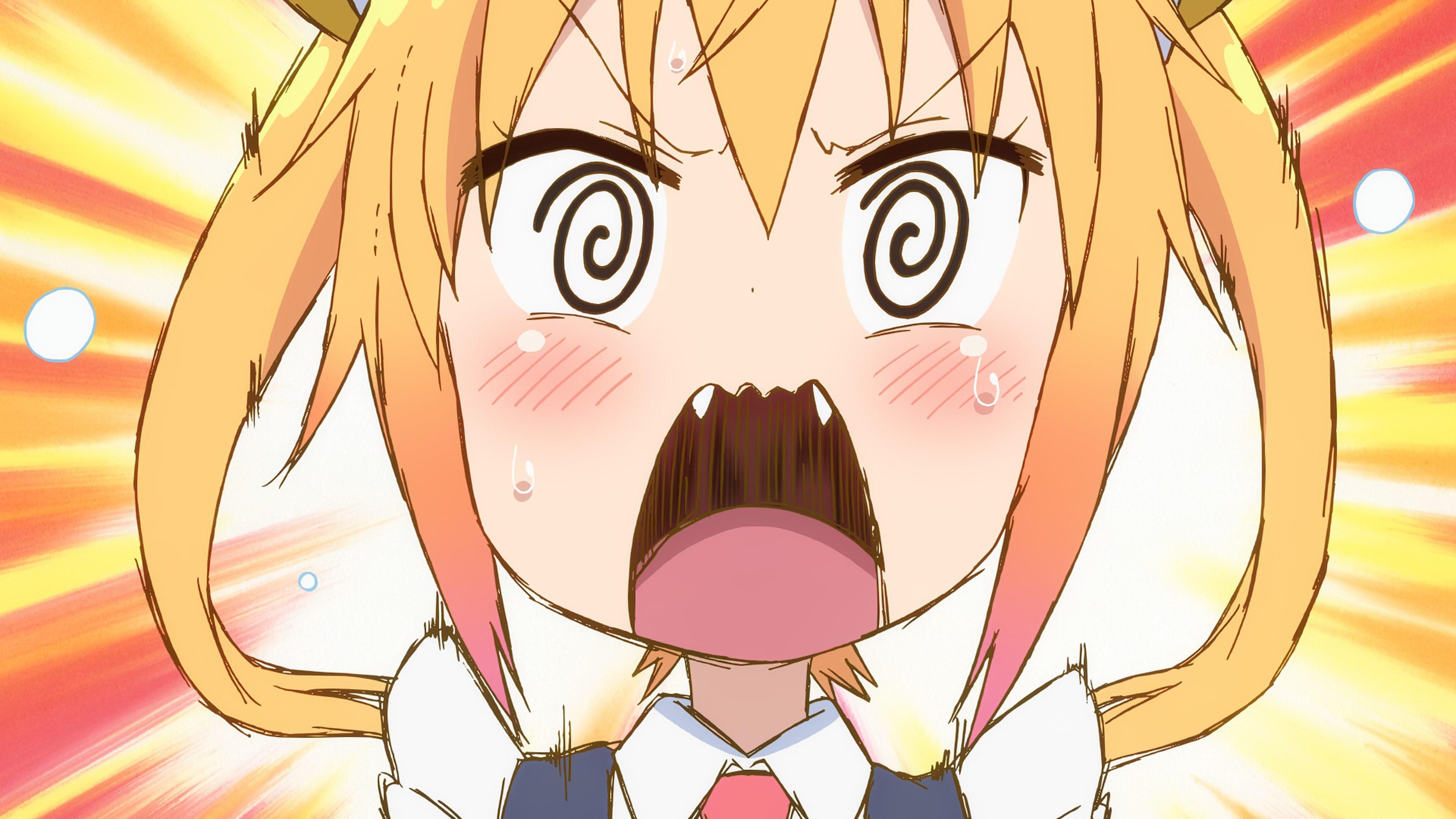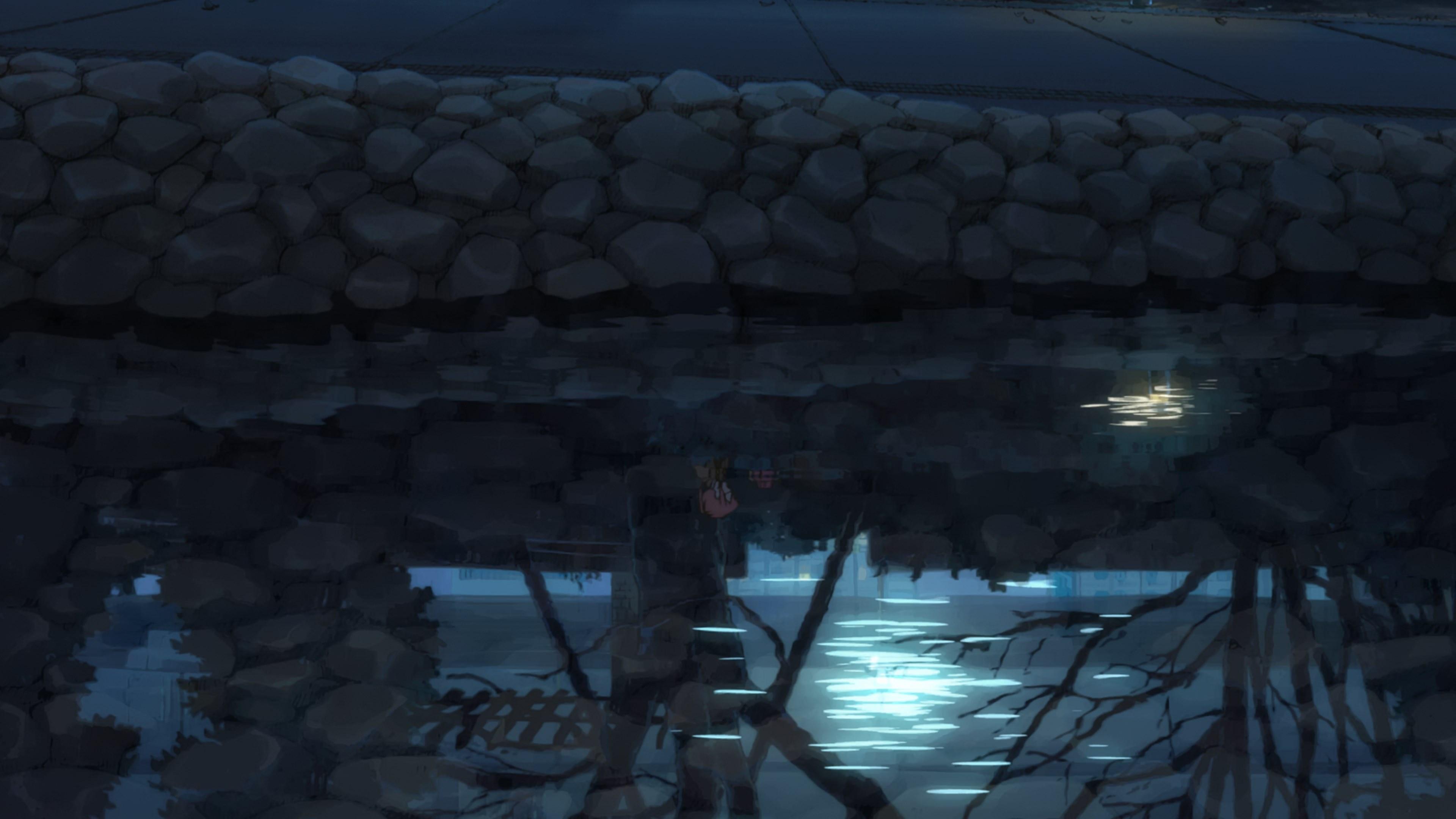
Kyoto Animation’s Changing Studio Dynamics: Miss Kobayashi’s Dragon Maid S Production Notes 02
The second episode of Miss Kobayashi’s Dragon Maid S happens to embody some ongoing changes to Kyoto Animation’s inner workings: forced to adapt to the circumstances after the tragedy exactly two years ago, while also protecting the young talent they want to continue training. More than ever before, the studio works as one now.
Much like the first episode, Maidragon S #02 is the product of a bit of a rearrangement. Late director Yasuhiro Takemoto had drawn the storyboards for the introduction to Ilulu’s story, meaning that most of this episode comes directly from his own hand again. However, since tragic circumstances led to this sequel arriving way later than it was initially planned, his replacement and good friend Tatsuya Ishihara changed things around somewhat to freshen up people’s memories about the character dynamics. And thus, the first episode ended up having quite the fast-paced comedic intro boarded by Ishihara himself, while this second one was padded with some more quick silly gags of his around the end.
Although season 2 managed to feel familiar right off the bat, this episode does away with that slightly uncomfortable feeling some people had regarding the pacing of the first one, which simply comes down to that necessary restructuration of the material affecting this episode to a lesser degree. Maidragon will always be an uncanny mix of moods and themes—part of its charm—but episodes like this come much closer to presenting them in a cohesive manner, even with the humor getting wildly inappropriate in spots. That too is very much Maidragon in a nutshell.
Normally, you would associate an increase in cohesiveness like this episode’s with a reduced core team capable of executing their very specific, individual vision, but that’s not quite the case here. Mind you, by current industry standards we’re still talking about a tiny team—6 key animators with no big names and a couple of supervisors nonchalantly pulling off work of this quality simply doesn’t happen elsewhere—but it still has a more segmented team than the previous, less focused episode.
Rather than having Ishihara direct Takemoto’s and his own boards like in the first episode, this time we’ve got Taichi Ogawa, one of the greatest directors at the studio who’s still slept on. An episode he didn’t personally storyboardStoryboard (絵コンテ, ekonte): The blueprints of animation. A series of usually simple drawings serving as anime's visual script, drawn on special sheets with fields for the animation cut number, notes for the staff and the matching lines of dialogue. is hardly the best showcase of his style, especially given how quirks of his like the extremely high number of shots simply wasn’t for him to decide, but his approach to the compositing still managed to give it a warmth that Ishihara’s work didn’t necessarily have. The scene at night between Kobayashi and Ilulu, for its beauty and the way it quite literally embodies the former becoming a new source of light for the latter, might be the best example of what he brings to the table here.
A similar situation applies to the animation directionAnimation Direction (作画監督, sakuga kantoku): The artists supervising the quality and consistency of the animation itself. They might correct cuts that deviate from the designs too much if they see it fit, but their job is mostly to ensure the motion is up to par while not looking too rough. Plenty of specialized Animation Direction roles exist – mecha, effects, creatures, all focused in one particular recurring element. front, as that was split between two individuals for each half of the episode. The first one was in the hands of Kayo Hikiyama; this alone is big news if you’re acquainted with Kyoto Animation’s personnel, but I want to talk about the animation before getting to what this all means regarding the studio as a whole. So, what is there to say about her work here? That her character art still draws very heavy inspiration from Yukiko Horiguchi’s for one, with this episode channeling Lucky Star–era expressions very strongly. Though her animation is never as elastic as Horiguchi’s, this welcome turn is completely unsurprising: that era was precisely when she solidified her style as an animator, and even her training as a supervisor happened during the production of K-ON’s film. Old habits die hard, and even more so if you acquired them when working under one of the most influential artists in modern anime.
In another surprise move, the final segment of the episode marked Seiya Kumano’s animation directionAnimation Direction (作画監督, sakuga kantoku): The artists supervising the quality and consistency of the animation itself. They might correct cuts that deviate from the designs too much if they see it fit, but their job is mostly to ensure the motion is up to par while not looking too rough. Plenty of specialized Animation Direction roles exist – mecha, effects, creatures, all focused in one particular recurring element. debut. Given his skillset, the transition to this role should be quite natural. Kumano is known for his fundamentally solid character art, and has developed the ability to tweak other people’s animation to perfectly polish it; although the role of 2nd key animationKey Animation (原画, genga): These artists draw the pivotal moments within the animation, basically defining the motion without actually completing the cut. The anime industry is known for allowing these individual artists lots of room to express their own style. no longer exists at KyoAni because everyone finishes their own layoutsLayouts (レイアウト): The drawings where animation is actually born; they expand the usually simple visual ideas from the storyboard into the actual skeleton of animation, detailing both the work of the key animator and the background artists. themselves most of the time, there are some specialists like Kumano who do it for others in case of need. Interestingly, he was given the chunk of the episode that needed the most lively and cartoony animation, which he did a pretty good job with—so, no need to worry that his specialization thus far would lead to stiffer art than you’d expect from the studio.
If both Hikiyama and Kumano managed to slide into this role so smoothly, what’s so exceptional about it, then? In summary, they’re both from Osaka, and way more experienced than all these newcomers that KyoAni is currently giving bigger opportunities to. So, let’s explain what that means.
While talking about Hikiyama’s influences earlier, I already mentioned that she was promoted to the role of animator director in 2011. What I neglected to explain, however, is that she stepped down from that role in 2015 precisely to make way for younger staff, taking on a position similar to Kumano’s as a key animator who could always lend a hand to others—while still animating her own scenes, of course. While he’s not as much of a veteran himself, Kumano has also been a key animator at the studio since 2014, meaning that he received a very late promotion to the role by their current standards. The reason why this would happen should be obvious: you can’t foster the young talent we’ve been talking about without more experienced staff by their side.
On the whole, the team for this episode skews a bit less experienced than the previous one; there are some outright debuts by youngsters like production assistantProduction Assistant (制作進行, Seisaku Shinkou): Effectively the lowest ranking 'producer' role, and yet an essential cog in the system. They check and carry around the materials, and contact the dozens upon dozens of artists required to get an episode finished. Usually handling multiple episodes of the shows they're involved with. Tsumiki Asada, as well as the chronological key animationKey Animation (原画, genga): These artists draw the pivotal moments within the animation, basically defining the motion without actually completing the cut. The anime industry is known for allowing these individual artists lots of room to express their own style. debut for Kengo Narimatsu, one of the youngsters who worked on the beautiful new KyoAni commercials that still play alongside this show on TV. The veterans at the studio have talked about—and shown with their actions—wanting to give an opportunity to their youngsters to put out tangible work out there, but giving them the job alone with no support would have been a poisoned gift. Which is to say that, in the midst of all this new talent flourishing at the studio that is made most evident by all the debuts and promotions we’ll be seeing, there will also be veteran staff members adapting their positions to the right supportive roles. A very predictable, very soothing development from a studio that has always put genuine rearing of talent at the forefront of their priorities.
The other point worth highlighting is their origin on a more physical level—which is to say, that both Hikiyama and Kumano work at the studio’s Osaka branch. We’ve talked at length about them over the years; the fact that they were established as the Kyoto Animation Osaka substudio, the founding of Animation Do in its place for financial convenience while keeping them fully integrated into the KyoAni pipeline creatively and production-wise, and more recently their full incorporation back into KyoAni. Again, the reason is clear: with the studio running lower on assets and manpower, it makes sense to concentrate it all under the same banner, even if things essentially already worked like that from an anime-making standpoint.
Over the last decade, around 25% of KyoAni’s TV episodes have been produced at their Osaka location. There has been variation in specific circumstances, like them producing nearly half of Free!’s first season as that was the first Animation Do-born project at the studio, and then making it up by barely touching surrounding projects like Tamako Market and Kyoukai no Kanata. Exceptions aside, though, their role had been quite regular… and yet it stands to change, as the arson attack was perpetrated at the main building in Kyoto, meaning that all these existing studio dynamics need to be readjusted.
As you might imagine, this is going to entail a more sizable role for their staff in Osaka. Changes in this regard have been happening slowly but surely, starting with the fact that the historic KyoAni School now holds an animation course in their Osaka headquarters as well, making sure the veterans there are also heavily involved in this unstoppable training process. Although it’ll take time to see more projects led by Osaka staff—something that was already happening regardless of the arson—for now they should be taking a more proactive role in Kyoto productions. Up until now, it was common for the two substudios to split the work very cleanly, meaning that episodes at each location would be storyboarded, directed, supervised, and animated there.
While you’ll find about a dozen specific exceptions to that norm over the last decade, those usually occurred either due to demanding workloads with limited time or when trying to avoid bottlenecks because a specific team would be sitting on their desks doing nothing otherwise. On top of that, help was usually directed—especially in the former case—from Kyoto to Osaka, with the bigger team helping the smaller one. None of these cases really apply to Maidragon S, and yet here we are, with some Osaka veteran animators having helped during the first episode produced in Kyoto, and Osaka animation directors for the second one despite it also being produced at the main branch. From now on, at least for a few years, this should become the norm. Fortunately, they really have their comrades’ backs.
Does this pose any sort of challenge, a price to pay for changing a dynamic that had worked perfectly to this point? It would be easy to get lost in purely speculative debates about KyoAni diluting one of their greatest qualities, which is having gathered every single department in the same building and thus being able to very efficiently produce high-quality work alongside staff that understands each other perfectly. That said, anyone acquainted with the inner workings of the studio knows that it’s complete, overly-literal nonsense to look at things that way.
KyoAni’s physical closeness, that ability to just walk to someone’s desk and ask for clarifications or guidance, is of great help. At the same time, they’ve had multiple buildings where the same projects are produced for ages, so this small communication hurdle is nothing new. While I’ve talked about episodes produced at Osaka, the truth is that they don’t have a perfectly complete production line like Kyoto does, meaning that they always had to communicate with coworkers one city over to handle the finishing touches—and yet, it wasn’t incongruences that made Osaka-centric works noticeable, but rather perfectly realized stylistic choices.
When it comes to it, KyoAni’s branches had always worked as one. Regardless of where they happen to have their desk, they’re still intimately familiar with coworkers that are more often than not the only ones they’ve ever professionally collaborated with. No adjustments to their inner workings are going to change that. And yet, even though reabsorbing Animation Do was mostly a financial move, it still feels right from a creative point of view, now that the studio needs unity and mutual support. Today marks the second anniversary of the arson attack on Kyoto Animation Studio 1, and this remains their priority.
Episode 02
StoryboardStoryboard (絵コンテ, ekonte): The blueprints of animation. A series of usually simple drawings serving as anime's visual script, drawn on special sheets with fields for the animation cut number, notes for the staff and the matching lines of dialogue.: Yasuhiro Takemoto, Tatsuya Ishihara
Episode DirectionEpisode Direction (演出, enshutsu): A creative but also coordinative task, as it entails supervising the many departments and artists involved in the production of an episode – approving animation layouts alongside the Animation Director, overseeing the work of the photography team, the art department, CG staff... The role also exists in movies, refering to the individuals similarly in charge of segments of the film.: Taichi Ogawa
Chief Animation DirectorChief Animation Director (総作画監督, Sou Sakuga Kantoku): Often an overall credit that tends to be in the hands of the character designer, though as of late messy projects with multiple Chief ADs have increased in number; moreso than the regular animation directors, their job is to ensure the characters look like they're supposed to. Consistency is their goal, which they will enforce as much as they want (and can).: Nobuaki Maruki
Animation DirectionAnimation Direction (作画監督, sakuga kantoku): The artists supervising the quality and consistency of the animation itself. They might correct cuts that deviate from the designs too much if they see it fit, but their job is mostly to ensure the motion is up to par while not looking too rough. Plenty of specialized Animation Direction roles exist – mecha, effects, creatures, all focused in one particular recurring element.: Kayo Hikiyama, Seiya Kumano
Key AnimationKey Animation (原画, genga): These artists draw the pivotal moments within the animation, basically defining the motion without actually completing the cut. The anime industry is known for allowing these individual artists lots of room to express their own style.: Yoshinori Urata, Taira Yamaguchi, Chiharu Kuroda, Aoi Matsumoto, Chika Kamo, Kengo Narimatsu
Support us on Patreon to help us reach our new goal to sustain the animation archive at Sakugabooru, SakugaSakuga (作画): Technically drawing pictures but more specifically animation. Western fans have long since appropriated the word to refer to instances of particularly good animation, in the same way that a subset of Japanese fans do. Pretty integral to our sites' brand. Video on Youtube, as well as this SakugaSakuga (作画): Technically drawing pictures but more specifically animation. Western fans have long since appropriated the word to refer to instances of particularly good animation, in the same way that a subset of Japanese fans do. Pretty integral to our sites' brand. Blog. Thanks to everyone who’s helped out so far!



Really interesting article. I love how the author of this article showed how the themes and styles of the old KyoAni animators affect the current iteration of it’s work. I’m not an animator or even someone who knows the first thing about this side of animation. But for what it’s worth, I found the article incredibly interesting and engaging, even for a layman such as myself. I look forward to reading more of your work
I still don’t understand why Taichi Ogawa hasn’t gotten his own project yet it feels like it should have been ages ago.
Kayo Hikiyama back in the AD seat was such a pleasant surprise. I still remember raving about her work in Hyouka as being some of the best in that show. I hope we get to see more AD work from her, but I assume as the studio continues to get back on its feet and getting a solid output speed she’ll step down again. Still, I’m so happy KyoAni is back. I don’t really pay attention to seasonal anime anymore, but I was thinking about Futoshi Nishiya recently, as one of my dreams if I ever got into KyoAni after… Read more »
Credits for Episodes 3-9: Episode 3 Storyboard Artists: Haruka Fujita, Noriyuki Kitanohara, Takuya Yamamura Episode Director: Noriyuki Kitanohara Animation Director: Kazumi Ikeda Key Animators: Hiroshi Karata, Kayo Hikiyama, Momoka Yoshizaki, Rie Sezaki, Saeko Fujita, Seiya Kumano, Yuki Yokoyama Episode 4 Storyboard Artist: Tatsuya Ishihara Episode Director: Shinpei Sawa Animation Directors: Miku Kadowaki, Nobuaki Maruki Key Animators: Aoi Matsumoto, Chiharu Kuroda, Mariko Takahashi, Saeko Fujita, Yuki Yokoyama, Yusuke Miyahara Episode 5 Storyboard Artist/Episode Director: Noriyuki Kitanohara Animation Director: Yuki Tsunoda Key Animators: Chinatsu Kamo, Kengo Narimatsu, Mei Isai, Rie Sezaki, Sae Sawada, Tomomi Sato Episode 6 Storyboard Artist: Tatsuya Ishihara Episode… Read more »